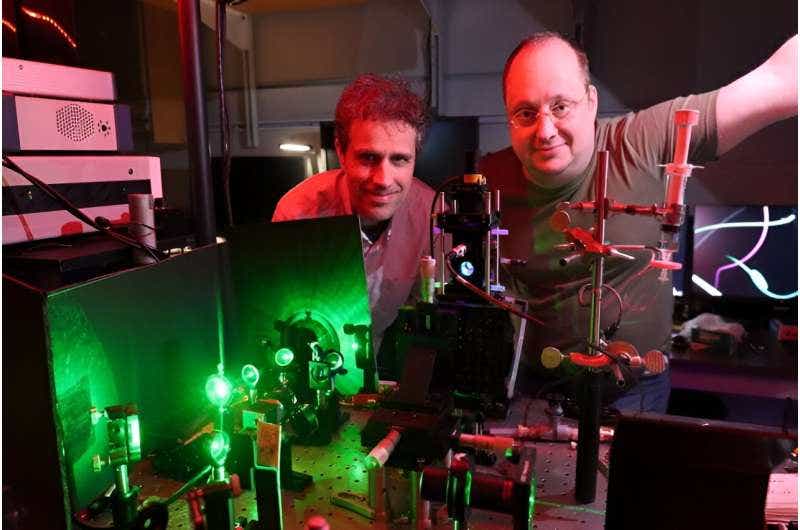Researchers discover a previously unknown way in which light interacts with matter
Researchers have unveiled a novel interaction between light and matter that could significantly enhance solar power, LEDs and lasers.

A groundbreaking study by chemists at the University of California, Irvine, in collaboration with Kazan Federal University in Russia, has unveiled a novel interaction between light and matter that could significantly enhance technologies such as solar power systems, light-emitting diodes (LEDs), and semiconductor lasers.
Their research, detailed in a recent issue of the journal ACS Nano, explores the dynamic momentum of photons when confined to the nanoscale environments within silicon, a common yet typically optically inefficient material.
Silicon, the second-most abundant element on Earth, is a cornerstone of modern electronics due to its semiconductor properties. Despite its prevalence, silicon's indirect bandgap has limited its application in optoelectronics, which rely on materials' ability to absorb and emit light efficiently.
"Silicon does not naturally emit light in its bulk form; however, when it is made porous or structured at the nano level, it becomes capable of emitting light after exposure to visible radiation," explained Dmitry Fishman, a UC Irvine adjunct professor of chemistry and senior author of the study.
Historically, the interaction of light with matter has been a fundamental but complex area of study. The team’s discovery draws parallels to pivotal scientific breakthroughs from the early 20th century.
"In 1923, Arthur Compton showed that gamma photons had enough momentum to interact with electrons, proving light’s dual wave and particle nature, a discovery that earned him the Nobel Prize in Physics in 1927," Fishman recounted.
The Irvine team’s experiments have now demonstrated that similar momentum can be achieved with visible light in nanostructured silicon, leading to impactful optical interactions in semiconductors.
Related Stories
The theoretical groundwork for understanding these interactions dates back to experiments by C.V. Raman in 1928, who discovered the Raman effect—vibrational energy changes in molecules illuminated by light, a discovery that also earned a Nobel Prize.
"Our findings relate to a form of electronic Raman scattering in disordered silicon, a phenomenon previously observed only in metals. Unlike the typical vibrational Raman effect, electronic Raman involves shifts between different electronic states," said Eric Potma, a co-author and UC Irvine chemistry professor.
For their experiments, the researchers fabricated silicon glass samples varying from amorphous to crystalline states. They used a continuous-wave laser, focused tightly to a 300-nanometer-thick film of silicon, to etch an array of lines with precise control over the sample’s exposure to heat.
"At temperatures below 500 degrees Celsius, the silicon remains amorphous, forming a uniform glass, but above this threshold, it crystallizes, creating heterogeneous semiconductor structures," Fishman detailed. This method allowed the team to manipulate and observe the electronic, optical, and thermal properties at the nanoscale.
These insights have significant implications for the understanding of light-matter interaction, especially highlighting the role of photon momentum in disordered systems.
"In these systems, matching the momentum of electrons and photons enhances their interaction, a concept previously known only in high-energy photon interactions with electrons, as seen in classical Compton scattering," Fishman added. This expanded understanding could transform optical spectroscopy, moving it beyond chemical analysis to include structural studies linked to photon momentum.
Potma highlighted the practical implications of this research: "The ability to manipulate light in this way opens new avenues for developing more efficient optoelectronic devices. This includes not only improving the performance of existing technologies but also enabling new applications for materials previously deemed unsuitable for light emission."
Such advancements could lead to more effective solar energy conversion and brighter, more efficient LEDs, marking a significant step forward in both energy sustainability and electronic technology.
This study not only challenges the current understanding of how light interacts with matter but also sets the stage for future innovations in multiple fields of technology and science. By harnessing the unique properties of photons at the nanoscale, scientists can unlock new potential in materials like silicon, paving the way for advancements in optoelectronics and beyond.
Co-authors on this study included Jovany Merham, a UC Irvine junior specialist in chemistry, and Kazan Federal University researchers Sergey Kharintsev, Elina Battalova and Aleksey Noskov. The project received financial support from the Chan Zuckerberg Initiative and Kazan Federal University.
For more science and technology stories check out our New Discoveries section at The Brighter Side of News.
Note: Materials provided above by The Brighter Side of News. Content may be edited for style and length.
Like these kind of feel good stories? Get the Brighter Side of News' newsletter.



